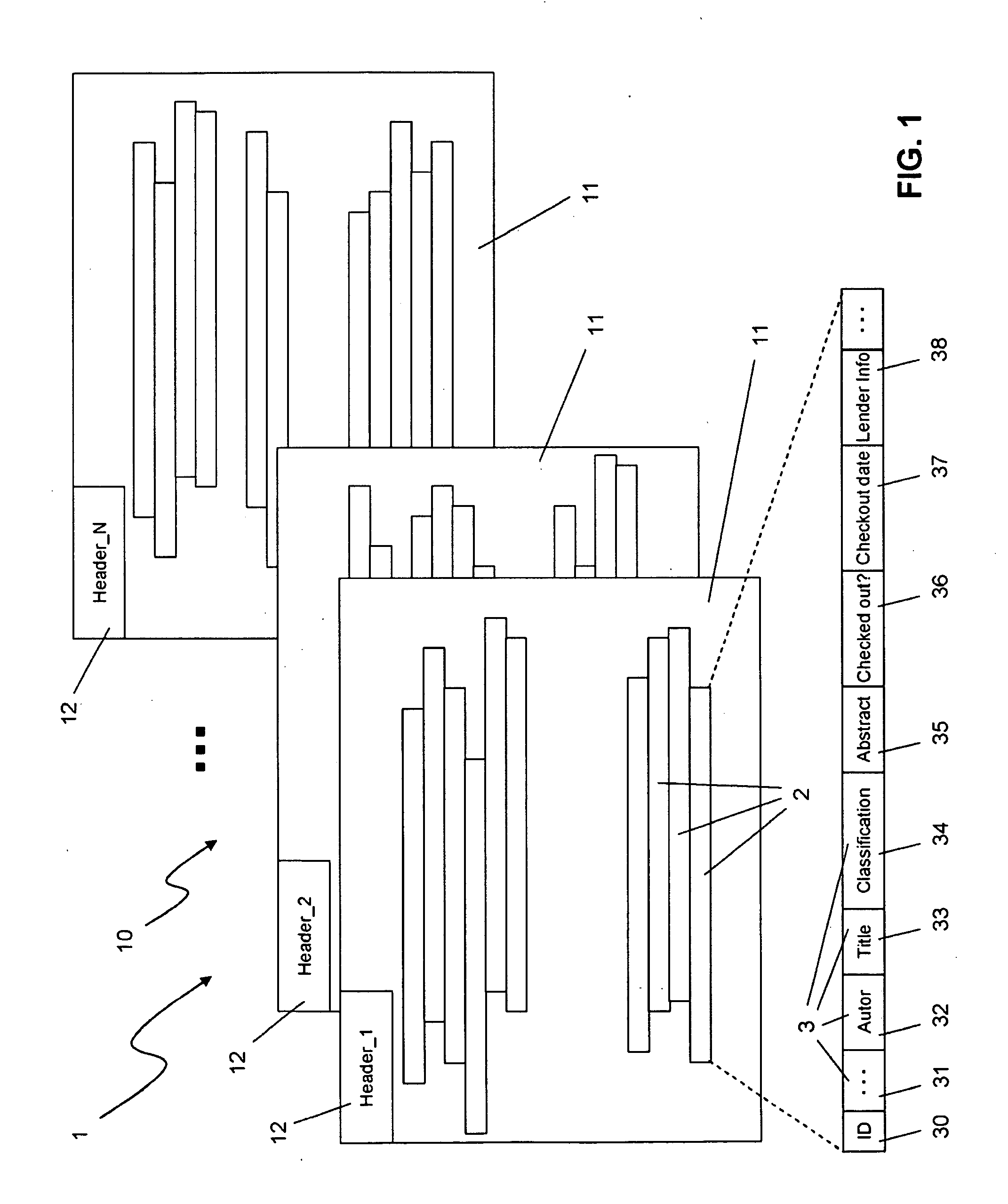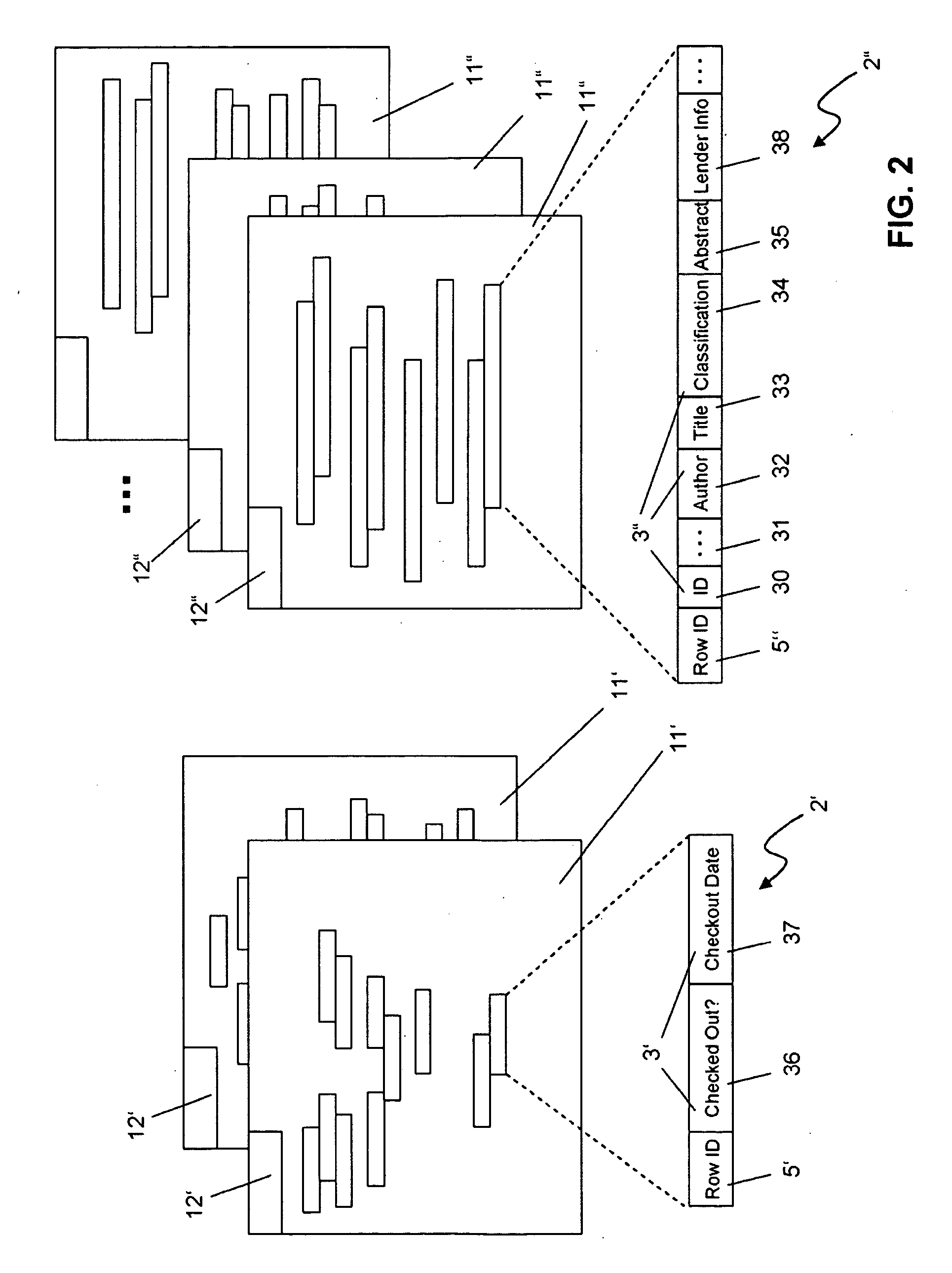Method and system for optimizing data access in a database using multi-class objects
a database and data access technology, applied in the field of roworiented relational database optimization system, can solve the problems of large number of rows, inefficient data modification statements/operations, cumbersome and inefficient queries to the database, etc., and achieve the effect of saving computing resources
- Summary
- Abstract
- Description
- Claims
- Application Information
AI Technical Summary
Benefits of technology
Problems solved by technology
Method used
Image
Examples
Embodiment Construction
[0021]FIG. 1 shows a schematic diagram of part of a relational model database 1 of a library card catalogue, containing a collection of records 2 representing library entries such as books, catalogues, publications etc. Database 1 being a row-oriented database, the records 2 are stored in a table 10 where information about each library entry is represented in the form of rows 2 containing columns 3. The columns 3 enumerate the various attributes of data representing actual instances of library entries, such as identification number (in column 30), author, title and library classification of the book (in columns 32 to 34), checkout information on the book as well as the name / address of the last lender (in columns 36 to 38) etc. Each row 2 represents an actual instance, i.e. a specific library entry, enumerating its various attributes. In the following description, the terms “row” and “data set” will be used interchangeably.
[0022]Typically, a library database will hold a large number ...
PUM
 Login to View More
Login to View More Abstract
Description
Claims
Application Information
 Login to View More
Login to View More - R&D
- Intellectual Property
- Life Sciences
- Materials
- Tech Scout
- Unparalleled Data Quality
- Higher Quality Content
- 60% Fewer Hallucinations
Browse by: Latest US Patents, China's latest patents, Technical Efficacy Thesaurus, Application Domain, Technology Topic, Popular Technical Reports.
© 2025 PatSnap. All rights reserved.Legal|Privacy policy|Modern Slavery Act Transparency Statement|Sitemap|About US| Contact US: help@patsnap.com



